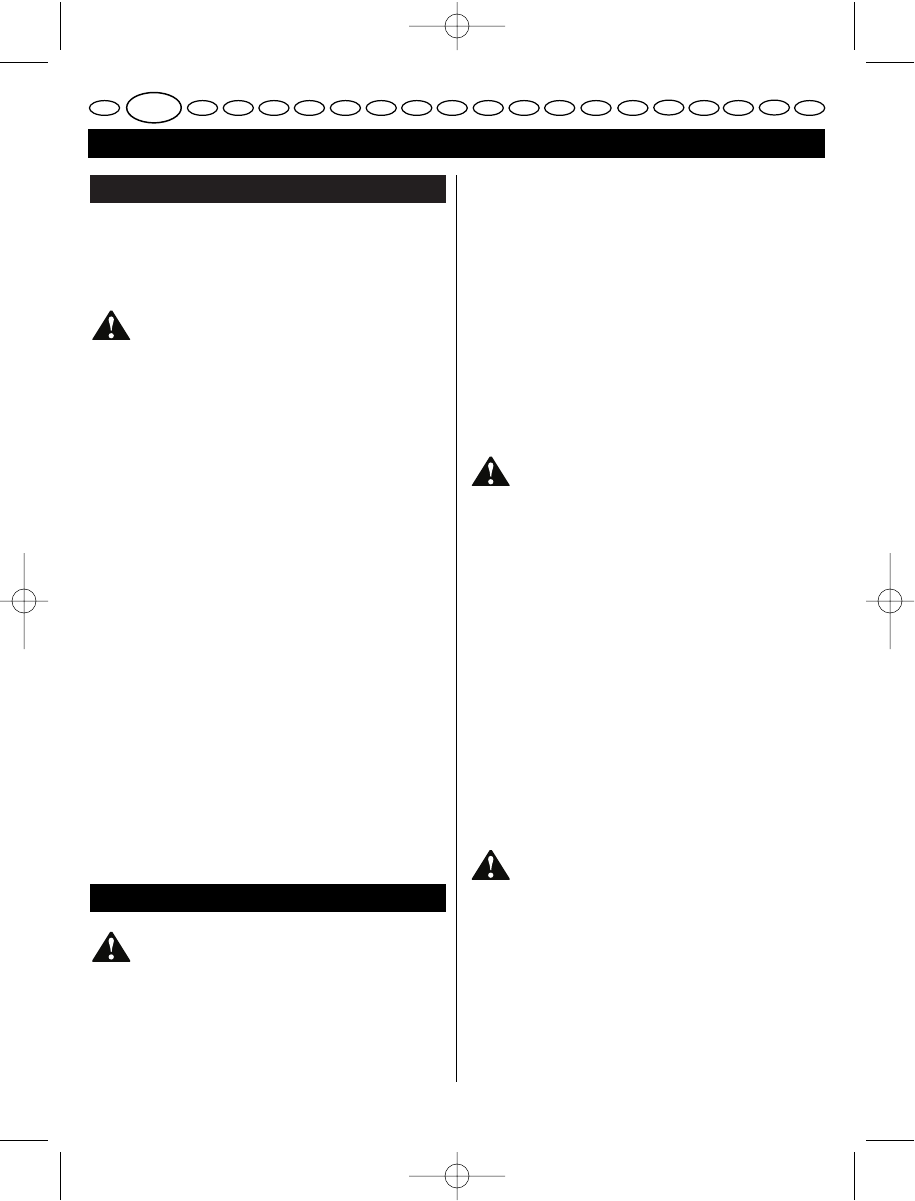
ADJUSTMENTS
■ Slide the collar (8) of the dust bag onto the exhaust
port (3).
NOTE: To remove the dust bag, pull it straight out of
the exhaust port.
CAUTION
The dust bag fills quickly. Empty it often to
prevent damage to the product.
ADJUSTING THE EXHAUST DIRECTION (Fig. 2)
Control the direction of debris when working in confined
areas. Change the direction of the exhaust to either the
right or left.
Follow these steps to adjust the exhaust direction:
■ Unplug the planer.
■ Adjust the exhaust direction and dust bag:
- To adjust exhaust to the right: Move the exhaust
direction knob (1) to the right and install the dust
bag on the right exhaust port.
- To adjust exhaust to the left: Move the exhaust
direction knob to the left and install the dust bag
on the left exhaust port.
ADJUSTING THE PLANING DEPTH (Fig. 3)
Always work from a rough cut to a finish cut.
The approximate setting for rough planing is 0.8 mm.
For finish planing use a setting of approximately 0.4 mm.
Make test cuts in scrap wood after each adjustment to
make sure that the planer is removing the desired
amount of wood.
Follow these steps to adjust planing depth:
■ Unplug the planer.
■ Turn the depth adjustment knob (4) to the desired
setting.
NOTE: To protect the blades during storage,
transporting, etc., set the depth adjustment to 0.
OPERATION
WARNING
Always wear safety goggles or safety glasses with
side shields when operating this tool. Failure to do
so could result in dust, shavings, chips, loose
particles, or foreign objects being thrown in your
eyes resulting in possible serious injury. If the
operation is dusty, also wear a face or dust mask.
STARTING / STOPPING THE PLANER (Fig. 4)
Follow these steps to start/stop the planer:
■ To start the planer: Push the lock-off button (6), and
then depress the trigger switch (4).
■ The EPN-7582N is fitted with a feature known as soft
start, this feature is electronically controlled and
delays the start up of the motor and blades.
■ To stop the planer: Release the trigger switch.
PLANING (Fig. 5)
Follow these steps to plane:
■ Clamp the work securely.
■ Adjust the planing depth. Refer to “Adjusting the
Planing Depth” earlier in this manual.
WARNING
Always use two hands on the tool for any
operation; this assures that you maintain control
and avoid risk of serious personal injury. Always
properly support and clamp the work so that both
hands are free to control the planer.
■ Place the front shoe (10) on the edge of work to
be planed.
NOTE: Make sure the blades (11) are not touching the
work.
■ Apply pressure to the front handle so that the front
shoe is completely flat on the work.
■ Start the planer and let the motor reach maximum
speed.
■ Hold the planer firmly and push it forward into the
work, using a slow, steady motion.
■ Apply downward pressure toward the rear handle as
you reach the end of the planed cut. This helps keep
the rear section of the planer base in contact with the
work and prevents the front of the planer from
gouging the cut.
WARNING
Be careful to avoid hitting nails during planing
operation; this action could nick, crack,
or damage blades.
NOTE: We suggest that you always keep an extra set
of blades on hand. As soon as the blades in your
planer show signs of becoming dull, replace them.
The blades in your planer are reversible and can be
reversed until both sides become dull.
10
GB
English
F D E I P NL S DK N FIN GR H CZ RUS PL
RO
SLO TR
HR
EPN-6082-7582N 3/08/06 11:24 Page 10


















